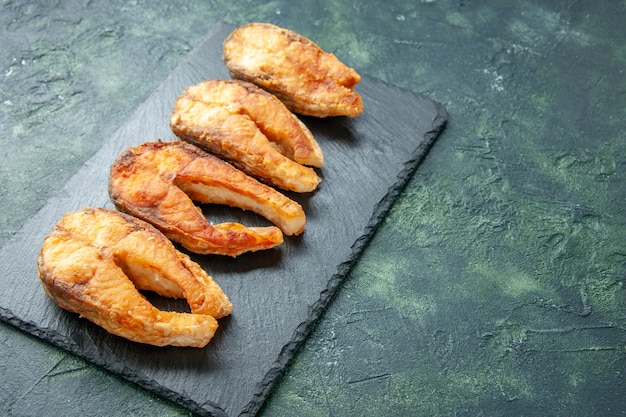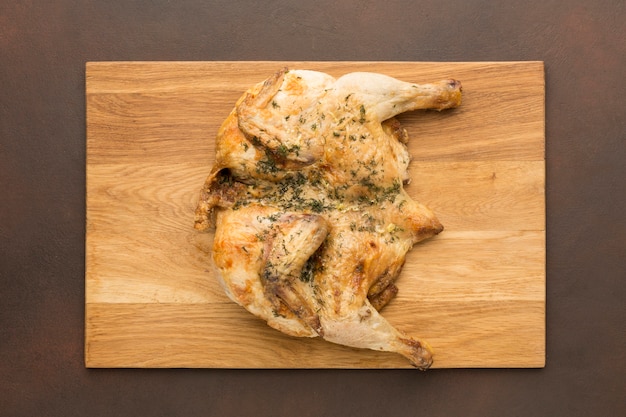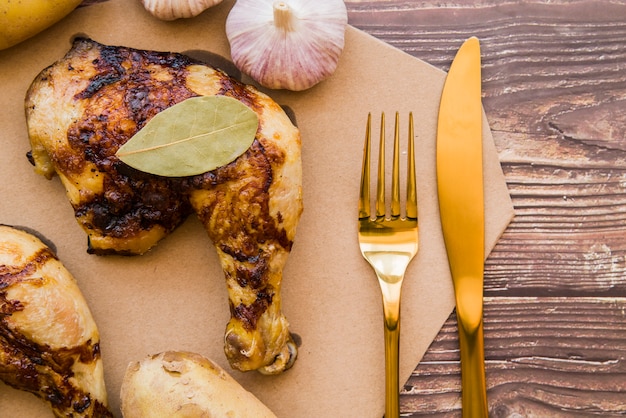Ah, boneless chicken thighs! They're the unsung heroes of the chicken world, often overshadowed by their breast counterparts. But let me tell you, once you experience the flavour and tenderness of a perfectly cooked chicken thigh, you'll never go back. The key to unlocking their juicy potential? Knowing the right cooking times, of course!
Over the years, I've learned a thing or two about cooking chicken thighs. I've definitely had my fair share of dry, rubbery disappointments, but I've also had moments of pure chicken bliss. In this guide, we'll dive deep into the world of boneless chicken thighs, exploring cooking methods, temperatures, and all the little tricks that ensure juicy, flavourful results every time. Buckle up, chicken lovers, it's about to get delicious!
(Part 1) Boneless Chicken Thighs: A culinary adventure Awaits

Let's start with the basics, shall we? Understanding the anatomy of a chicken thigh is crucial to mastering the art of cooking it.
Why Boneless Chicken Thighs Are a culinary gem
Firstly, let's dispel the myth that chicken breasts are the only healthy option. Chicken thighs are actually packed with flavour and are naturally juicier due to their higher fat content. This fat doesn't just make them tastier, it also helps them stay moist during cooking, preventing dryness and that dreaded rubbery texture.
Then there's the versatility factor. You can roast them, pan-fry them, bake them, grill them, even slow cook them - they're perfect for any kind of meal, from a quick weeknight dinner to a fancy weekend feast. And let's not forget about the affordability! Boneless chicken thighs are often a budget-friendly option, especially when compared to other cuts of meat.
Understanding the Thickness: Cooking Time Matters
Here's the thing about boneless chicken thighs: they come in all sorts of shapes and sizes. One thing to consider is their thickness. A thin chicken thigh will cook faster than a thicker one. This might seem obvious, but it's a crucial detail to keep in mind when planning your meal. If you're not sure, just give your thighs a quick feel - you'll get a good sense of their thickness and can adjust the cooking time accordingly.
(Part 2) Cooking Time: Unlocking the Secrets of juicy chicken

Now, let's talk about the heart of the matter - those crucial cooking times. Each method has its own unique charm and requires a specific approach to ensure a perfect outcome.
Pan-Frying: Quick, Easy, and Oh So Delicious
Pan-frying is my go-to method for a simple yet satisfying meal. It's all about achieving that crispy skin and perfectly cooked, juicy meat. Here's how to do it right:
- Time: 10-15 minutes, depending on the thickness of the thighs. Remember, thinner thighs cook faster!
- Temperature: Medium-high heat, around 350°F/175°C. A hot pan is essential for that golden-brown crust.
- Technique: Heat a drizzle of oil in a pan, add your seasoned chicken thighs, and cook for about 5-7 minutes per side, or until golden brown and cooked through.
Pro tip: Make sure your pan is hot before adding the chicken, otherwise it will steam instead of getting that beautiful crisp.
Baking: Perfect for a Large Batch
Baking is your best friend when you're cooking for a crowd. It's easy to bake multiple thighs at once, and it's a great way to ensure even cooking and that lovely crispy skin.
- Time: 20-30 minutes, depending on the thickness of the thighs.
- Temperature: 375°F/190°C.
- Technique: Preheat your oven, toss those thighs in a little oil, salt, and pepper, and spread them out in a baking dish. Bake for 20-30 minutes, or until the internal temperature reaches 165°F/74°C.
You can also add a bit of water to the bottom of the baking dish to create steam, which helps to keep the chicken moist.
Roasting: Unleashing Flavourful Potential
Roasting is a surefire way to bring out the best in your boneless chicken thighs. It's ideal for a special occasion or when you want to impress your guests with a truly flavourful dish.
- Time: 40-50 minutes, depending on the thickness of the thighs.
- Temperature: 400°F/200°C.
- Technique: Preheat your oven, toss those thighs in a marinade or seasoning of your choice, and place them in a roasting pan. Roast for 40-50 minutes, or until the internal temperature reaches 165°F/74°C.
Pro tip: Add some chopped vegetables to the roasting pan for a one-pan meal that's both delicious and convenient.
Grilling: Summertime Delight
Grilling is all about that smoky flavour. It's perfect for summer barbecues or when you want to add a bit of rustic charm to your meal.
- Time: 10-15 minutes, depending on the thickness of the thighs.
- Temperature: Medium heat, around 350°F/175°C.
- Technique: Preheat your grill, season the thighs with salt and pepper or your favourite marinade, and grill for 5-7 minutes per side, or until cooked through.
Pro tip: To prevent the thighs from sticking to the grill, brush the grates with a little oil.
slow cooking: Tenderness and Flavour at Their Finest
Slow cooking is a game-changer for chicken thighs. It's the ultimate set-and-forget method for achieving incredibly tender and flavourful results.
- Time: 4-6 hours on low heat, or 2-3 hours on high heat.
- Temperature: Low (200°F/93°C) or High (300°F/149°C).
- Technique: Place the chicken thighs in your slow cooker, along with any desired ingredients, and cook on low heat for 4-6 hours, or on high heat for 2-3 hours.
Pro tip: Add a cup of broth or sauce to the slow cooker to keep the chicken moist and prevent it from drying out.
(Part 3) Tips and Tricks: Unlocking Juicy Chicken Magic

Now that we've covered the basics of cooking time, let's explore some of my favourite tips and tricks for achieving those perfect juicy, flavourful results.
1. The Importance of Doneness: Don't Overcook!
This is the golden rule of chicken cooking: overcooked chicken is dry and rubbery, a culinary crime no one wants to commit! The best way to avoid this is by using a meat thermometer. Aim for an internal temperature of 165°F/74°C. Once it hits that magic number, your chicken is safe to eat and perfectly cooked.
2. Seasoning: Don't Be Shy, Get Creative!
Boneless chicken thighs are a blank canvas for your culinary creativity. Don't be afraid to experiment with seasonings and find combinations that excite your taste buds.
Here are a few of my personal favourites:
- Paprika and cumin for a smoky flavour
- Oregano and thyme for a Mediterranean twist
- Chili flakes and ginger for a spicy kick
- Lemon zest and rosemary for a bright and refreshing taste
Remember, a little salt and pepper go a long way, but don't be afraid to get adventurous with your seasoning!
3. Space is Key: Give Those Chicken Thighs Some Room
When pan-frying or baking, make sure your chicken thighs have enough space to breathe. Crowding the pan can lead to uneven cooking and steamy chicken instead of crispy skin. If you're cooking a large batch, it's best to cook in batches to ensure each thigh gets the attention it deserves.
4. Rest is Best: Let the Juices Redistribute
After cooking, resist the urge to dig in right away! Give those chicken thighs a 5-10 minute rest before slicing and serving. This allows the juices to redistribute throughout the meat, resulting in a more tender, flavourful dish.
5. The Magic of Marinades: Infuse Those Thighs with Flavour
Marinades are like superheroes for chicken thighs. They infuse the meat with flavour and help to keep it moist during cooking.
Some popular marinade ingredients include:
- Acidic ingredients like lemon juice or vinegar, which help to tenderize the meat
- Oils, which add richness and moisture
- Herbs and spices, which provide flavour and aroma
Experiment with different combinations to find your favourite flavour profiles.
(Part 4) Recipes: From Classic to Creative
Now that we've covered the fundamentals, let's dive into some delicious recipes! I've got a bunch of favourites that are sure to please.
1. Classic pan-fried chicken Thighs: Simple and Satisfying
This recipe is a kitchen staple. It's quick, easy, and always a crowd-pleaser.
- Ingredients:
- 1 lb boneless, skinless chicken thighs
- 1 tbsp olive oil
- 1/2 tsp salt
- 1/4 tsp black pepper
- Instructions:
- Season the chicken thighs with salt and pepper.
- Heat the olive oil in a large skillet over medium-high heat.
- Add the chicken thighs to the skillet and cook for 5-7 minutes per side, or until golden brown and cooked through.
- Serve immediately.
2. Honey Garlic Chicken Thighs: A Sweet and Savoury Delight
This recipe is a sweet and savoury masterpiece that's perfect for a weeknight meal.
- Ingredients:
- 1 lb boneless, skinless chicken thighs
- 1 tbsp olive oil
- 1/4 cup honey
- 2 tbsp soy sauce
- 1 tbsp minced garlic
- 1/2 tsp black pepper
- Instructions:
- In a small bowl, whisk together the honey, soy sauce, garlic, and pepper.
- Add the chicken thighs to the marinade and toss to coat.
- Heat the olive oil in a large skillet over medium-high heat.
- Add the chicken thighs to the skillet and cook for 5-7 minutes per side, or until golden brown and cooked through.
- Pour the remaining marinade over the chicken thighs and cook for 1-2 minutes, or until the sauce thickens.
- Serve immediately over rice or noodles.
3. Lemon Herb Roasted Chicken Thighs: A Taste of the Mediterranean
This recipe is perfect for a weekend roast. It's bursting with flavour and is sure to impress your guests.
- Ingredients:
- 1 lb boneless, skinless chicken thighs
- 1 tbsp olive oil
- 1/2 tsp salt
- 1/4 tsp black pepper
- 1 tbsp lemon zest
- 1 tbsp fresh rosemary, chopped
- 1 tbsp fresh thyme, chopped
- Instructions:
- Preheat oven to 400°F/200°C.
- In a large bowl, toss the chicken thighs with the olive oil, salt, pepper, lemon zest, rosemary, and thyme.
- Place the chicken thighs in a single layer in a baking dish.
- Roast for 20-30 minutes, or until the internal temperature reaches 165°F/74°C.
- Serve immediately.
(Part 5) Beyond the Basics: Elevate Your Chicken Skills
Let's step up our game and explore some more advanced techniques to elevate your boneless chicken thigh skills.
1. Sear, Then Finish in the Oven: The Perfect Combination
This technique marries the best of both worlds - the crispy skin achieved by pan-frying and the even cooking of the oven. It's a great way to achieve that restaurant-quality finish.
- Steps:
- Sear the chicken thighs in a hot pan for 3-5 minutes per side, until they're golden brown and crisp.
- Transfer the chicken thighs to a baking dish.
- Bake in a preheated oven at 375°F/190°C for 10-15 minutes, or until the internal temperature reaches 165°F/74°C.
2. The reverse sear: Tenderness Redefined
The reverse sear is a fantastic technique for achieving incredibly tender chicken thighs. It involves cooking the chicken at a low temperature for a longer time, followed by a quick sear to create a crispy crust. It's perfect for those who prefer their chicken extra tender.
- Steps:
- Preheat your oven to 275°F/135°C.
- Place the chicken thighs on a baking sheet and bake for 30-40 minutes, or until the internal temperature reaches 150°F/65°C.
- Increase the oven temperature to 450°F/230°C and sear the chicken thighs for 5-7 minutes, until the skin is crispy and the internal temperature reaches 165°F/74°C.
3. Brining: Unlocking Ultimate Tenderness
Brining is a simple but effective technique that involves soaking chicken in a salt-water solution. It helps to retain moisture and makes the meat incredibly tender. This is a lifesaver for those who find chicken thighs a bit dry.
- Steps:
- Mix 1 cup of salt with 4 cups of water.
- Submerge the chicken thighs in the brine for 30 minutes to 2 hours.
- Pat the chicken thighs dry before cooking.
(Part 6) Troubleshooting: Conquering Common Challenges
Even the most experienced cooks can encounter a few bumps in the road when cooking chicken thighs. Don't worry, it happens to the best of us! Here's a guide to conquering common problems.
1. Dry Chicken: How to Avoid a Culinary Disaster
Dry chicken is a culinary tragedy. It's usually the result of overcooking, so remember to use a meat thermometer and cook to the correct internal temperature.
Here are some additional tips for preventing dryness:
- Don't overcrowd the pan: Give those chicken thighs room to breathe and cook evenly.
- Use a marinade: Marinades help to keep the chicken moist and flavourful.
- Add some liquid to the pan: A bit of water, broth, or wine can help to steam the chicken and keep it moist.
2. undercooked chicken: Safety First
Undercooked chicken is a serious health hazard. Make sure your chicken thighs are cooked through to an internal temperature of 165°F/74°C. Invest in a good meat thermometer for peace of mind! You can also check for doneness by cutting into the thickest part of the chicken. The juices should run clear, and the meat should be white throughout.
3. Uneven Cooking: Mastering Consistency
Unevenly cooked chicken thighs are a common issue, especially with thicker cuts. Here's how to prevent it:
- Cut the chicken thighs into smaller pieces: This ensures more even cooking.
- Use a baking sheet with a lip: This prevents the juices from running out.
- Rotate the chicken thighs halfway through cooking: This helps ensure even cooking on all sides.
(Part 7) side dish Symphony: Perfect Companions for Your Chicken Thighs
Now that we've mastered the art of cooking boneless chicken thighs, let's talk about the perfect side dish pairings. These delicious companions will elevate your meal from good to great.
1. Roasted Vegetables: A Rainbow of Flavour
Roasted vegetables are a classic side dish for chicken, and for good reason! They're easy to make, bursting with flavour, and complement chicken thighs beautifully.
Try roasting:
- Broccoli florets
- Brussels sprouts
- Carrots
- Potatoes
- Asparagus
- sweet potatoes
2. Creamy mashed potatoes: comfort food Perfection
creamy mashed potatoes are the ultimate comfort food, and they pair perfectly with chicken thighs. They're a bit more decadent than roasted vegetables but worth every bite!
3. Rice: A Versatile Side Dish
Rice is a versatile side dish that pairs well with a variety of flavours. You can cook white rice, brown rice, or even wild rice. Add some flavour with herbs, spices, or a drizzle of soy sauce.
4. Green Salad: A Refreshing Touch
A green salad adds a refreshing touch to any meal. Choose your favourite greens, add some vegetables, and a light dressing. A simple vinaigrette is always a good choice.
5. Pasta Salad: A Hearty and Delicious Option
Pasta salad is a hearty and delicious side dish that's perfect for a summer barbecue or potluck. Choose your favourite pasta, add some vegetables, and a creamy dressing. You can even add some grilled chicken to make it a complete meal.
(Part 8) FAQs: Your Chicken Thigh Questions Answered
Now, let's tackle some of your frequently asked questions about cooking boneless chicken thighs.
1. Can I freeze boneless chicken thighs?
Yes, you can definitely freeze boneless chicken thighs. To freeze them, wrap them tightly in plastic wrap or aluminum foil and place them in a freezer-safe bag. They can be frozen for up to 3 months. Remember to defrost them in the fridge overnight before cooking.
2. What happens if I overcook chicken thighs?
Overcooked chicken thighs will be dry and rubbery. That's why it's crucial to use a meat thermometer and to cook them to the correct internal temperature.
3. Can I use boneless chicken thighs in a slow cooker?
Absolutely! Slow cooking is a fantastic way to tenderize chicken thighs and make them super juicy. Just make sure to use enough liquid, like broth or sauce, to prevent them from drying out.
4. How do I make sure the skin gets crispy?
To achieve crispy skin, pan-fry or bake the chicken thighs at a high temperature. You can also pat the skin dry before cooking to remove excess moisture. If you're baking, place a rack in the baking dish to allow air to circulate and get the skin nice and crispy.
5. Can I cook chicken thighs with the bone in?
You definitely can! Boneless, skinless chicken thighs are the most popular, but bone-in thighs can be just as delicious. Just remember to adjust the cooking time accordingly. The bone helps to retain moisture and flavour, so bone-in chicken thighs tend to be more flavorful.
And there you have it! Hopefully, this guide has helped you become a boneless chicken thigh master. Remember, it's all about finding what works best for you, so don't be afraid to experiment. And if you're looking for more inspiration, you can always ask your favourite butcher for their tips and tricks. Happy cooking!
Everyone is watching

Corn on the Cob: The Ultimate Guide to Perfectly Cooked Ears
Healthy MealsAh, corn on the cob. Just the name evokes images of sunny days, barbecues, and that sweet, juicy flavour that ...

Perfect Pork Roast Oven Cooking Time: A Guide to Delicious Results
Healthy MealsThere's something truly satisfying about a perfectly roasted pork. The aroma alone is enough to make your mout...

Ham Cooking Time: How Long to Bake, Smoke, or Boil a Delicious Ham
Healthy MealsAh, ham. It's a classic, isn't it? A real crowd-pleaser, especially around holidays. And when done right, it'...

Scallops: The Ultimate Guide to Perfect Cooking
Healthy MealsAh, scallops. Those delicate, sweet, and utterly delicious morsels of the sea. They hold a special place in my...

Spaghetti Squash: The Ultimate Guide to Cooking and Serving
Healthy MealsRemember that time you saw spaghetti squash at the supermarket, looking all bumpy and strange, and thought, "W...
